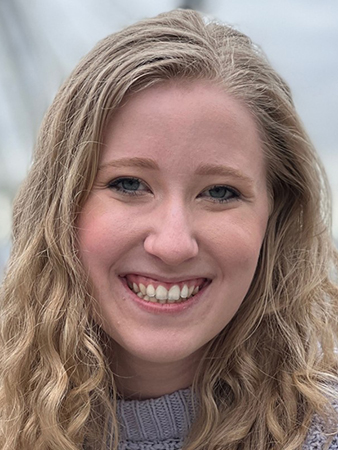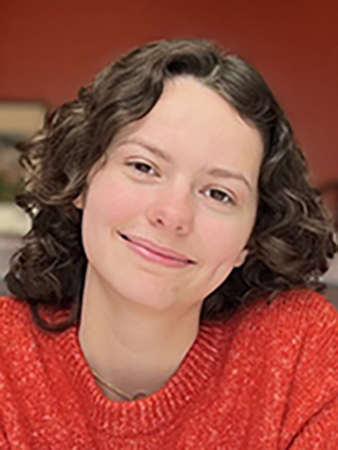Missouri School of Journalism students and alums leading new generation of news product thinkers

COLUMBIA, Mo. (Aug. 23, 2024) — Missouri School of Journalism graduates have long been coveted in the industry for the cross-training and on-the-job-experience they accumulate before entering the job market. Now, an emerging pipeline of graduates to the Minnesota Star Tribune, the state’s largest newspaper, is demonstrating yet another selling point of the School: students’ cutting-edge training in news product management.

Emily Hood and Sydney Lewis are two of the most recent J-School hires at the Star Tribune. Though they are by no means alone — the newspaper’s staff is replete with alums like Chase Davis, BJ ’06, vice president of newsroom strategy and transformation who has also taught data journalism at the School of Journalism and previously served as editor of The New York Times’ interactive news desk — they are heralds of a new generation of students learning how to bring the once-siloed disciplines of advertising, newsletters, social media and other supplements to hard news together into a collaborative whole.
“Mizzou has done a lot to cultivate students at the intersection of product, technology, digital storytelling and news,” Davis said, crediting professors Damon Kiesow, Mark Horvit and recently-retired Mike Jenner with leading this charge at the School. “Then these students come in and just do an awesome job, and we really want to keep them around, so we bend over backwards to do that as best we can.”
For Hood and Lewis, that process started with internships. Hood first came to the Star Tribune in the summer of 2023 as a Student Innovation Fellow through the School of Journalism’s Reynolds Journalism Institute (RJI). She built Striblytics, a Slackbot tool that allows the newspaper’s journalists and editors to access analytics and SEO insights in one place rather than “hunting and gathering.”
Initially asked to stay on temporarily after the fellowship ended to put the finishing touches on Striblytics, she now works full-time for the Star Tribune as a discovery producer, expanding readership through SEO, AI and other tools.
“We’re really focused on trying to figure out what the value is that we provide to Minnesotans and how we can measure that value appropriately,” Hood said. “How can we be a little bit more nuanced about what we’re doing as opposed to just publishing stories that get a lot of page views and traffic?”
The intersection of news, business and technology
Hood is a prime example of the Star Tribune’s approach to infusing a news product ethic throughout its operations. While she does not report to the newspaper’s product team, her training at the School of Journalism gave her a sense of how product thinking and audience engagement work in tandem, making her a perfect fit in an organization that is boldly expanding its coverage statewide at a time when most other news organizations are contracting or holding steady.

“News product kind of gives you the structures and the thought processes to evaluate what your audience’s needs are and how to better fulfill them,” Hood said. “So even though I don’t report to the product team, the person they were looking for in this job was somebody with a product background.”
Lewis followed a similar trajectory. Starting as an audience intern last summer, she stayed on to assist with analytics workflows until starting her full-time position as an associate product manager in June. Unlike Hood, she works directly in the newspaper’s product department, but the focus on collaboration is much the same.
“We kind of sit at the intersection of news, business and technology,” Lewis said. “As product managers, our job is really to help bridge gaps between all these different departments, to speak all these different languages and help work towards our company’s goals — on the business side, but also thinking about the journalism that we’re creating and the audiences that we’re serving.”
This multidisciplinary approach has been at the center of Kiesow’s research and teaching for some time, with Kiesow once describing news product as a key part of figuring out “how to balance the mission of public good with business needs.” It’s a description that fits well with the Star Tribune’s rollout of a new, highly polished digital presence and an assortment of multiplatform products even as it seeks to lean into — not away from — local, community-focused news.
That bodes well in Kiesow’s view, not least because of the success of an internship-to-full-time job pipeline that he hopes will serve as a model for other news organizations.
“Sydney [Lewis] actually did a research paper on what schools and the industry need to do to find a better path for news product students,” Kiesow said. “She basically argued that there is a need for more entry-level positions and more internships to give people experience. And that’s the story of what is happening with Mizzou and the Star Tribune. RJI supported the internships, Emily and Sydney did well, the organization decided they wanted to invest more in product, and then they created two positions that are more or less entry level.”
Product is from Mars, the newsroom is from Venus
Hood and Lewis aren’t the only points of contact between the School of Journalism and the Star Tribune. Four of the newspaper’s 12 interns this summer were current or former journalism students: senior Anna Colletto, MaKayla Hart, BJ ’23, Ellie Lin, BJ ’24, and graduate student Grace Noble. Lewis has also helped design an internship program that will bring several product management interns to the newspaper next summer (not necessarily from the School of Journalism).

“None of them are in product [this year], but several of them are interested in it and can speak that language,” Lewis said. “I think the common thread for all of us is that we are really interested in innovation in journalism, and we’re really focused on where the industry is going. We want to be a part of the solution to help local journalism continue to be a pillar of communities.”
It’s no surprise that Lewis holds this conviction, given that supporting local news and helping students recognize its value is an important focus for RJI.
“Local journalism is a crucial part of what holds communities together, and young people like Emily and Sydney are going to be key to securing its future,” said Randy Picht, executive director of RJI. “We’re trying to create as many opportunities as we can to put product thinkers into news organizations where they can take root and really make an impact.”
Indeed, it’s students’ hands-on experience being part of the solution — enabled by RJI and the School of Journalism’s Missouri News Network, which brings together a commercial NBC affiliate television station, a community newspaper, an NPR-member radio station, a magazine and a business news publication to plan and collaborate on community-centered student reporting — that puts School of Journalism students at the front of the pack for forward-thinking organizations like the Star Tribune.
“Sometimes, it’s a little bit like product and technology are from Mars and the newsroom is from Venus,” Davis said. “You have to figure out how to communicate and build that trust from the ground up. As we have greater ambitions to build more formal ties between the newsroom and the product department, people like Sydney and Emily are going to be a big part of that.”
Updated: August 23, 2024